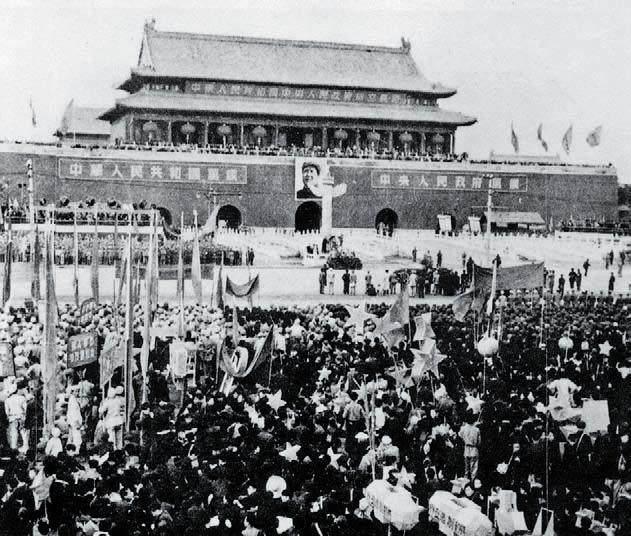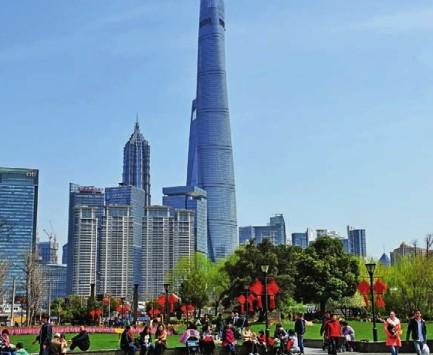China’s Growth and the Debate on Order
By FU YING



BEING in sync with the latest global develop- ments is one thing Chinas post-90s generation has in common with the youth of the U.S. By the time I or any of my generation had even heard of Windows, Bill Gates was the richest man on earth. Now, cool young Chinese, like their American peers, are poised and ready to pounce on every new iPhone launch. Moreover Fast & Furious 7 was released in Beijing cinemas at about the same time as it was in Chicago.
This being the case, it does not seem overly idealistic to hope that with so much information being shared among young people throughout the world they may be more open and amenable to understanding one another. Might it be possible, through them, to find a new way of building a global order that ensures lasting peace?
In his speech on Fathers Day a few years ago, U.S. President Obama said that the most important thing parents can instill in their offspring is the value of empathy – the ability to stand in somebody elses shoes and see the world through their eyes.
The Evolving World Order and Chinas Position in It
Dr. Kissingers latest book World order triggered much discussion in China. It is an absorbing account of the rise and fall of great powers over the 400 years since the Westphalia peace conference, and of the wars and conflicts that led to shifts in power.
The book points out, however, that the Westphalian system was not universal but one of many of the time that coexisted in isolation from one another.
In China, meanwhile, a distinct system of governance, values and traditions evolved during the countrys long history that have held sway to the present day. Our view of history, therefore, may have a different base. I have singled out from the book a few historical instances of the evolution of world order.
It was in 1648 that Europe finalized the Westphalia Treaty that ended the 30 Years War and, in recognizing nation states sovereignty and self-determination of internal affairs, established a modern sense of order among them. Colonial powers on the continent then advanced on many corners of the world, notably the United States, which declared independence in 1776.
During the centuries leading up to this period, a long and generally peaceful relationship had endured in Asia. Chinas Qing Dynasty was in its prime, and Chinas population in the 18th century was bigger than that of all European countries combined. The arrival of European imperialists in the mid-19th century, however, shattered this almost 2,000 year-period of harmony.
When the Versailles Treaty was signed in 1919 after WWI, most of Asia was colonized and Chinas territorial integrity too had been violated. The last emperor of China abdicated, and attempts by political elites to install a republic with a Western style parliamentary system failed time and again, one way or another. As the country descended into chaos and conflict the younger generation looked elsewhere for a solution.
It was in this context that, in 1921, a dozen or so young people, mostly in their late 20s, established the Communist Party of China.
Two decades later in 1941, Henry Luce of Time magazine declared the arrival of the American century. Two-thirds of Chinas territory was under Japanese occupation, and 35 million Chinese people either died or suffered injury in war. China hosts a major commemora-tion in September to mark the 70th anniversary of the victory of the War against Japanese Aggression. It will be an occasion to remember our heroes and reflect on history and the value of peace.
When peace finally came in 1949, and the PRC was founded, the economy was on the brink of collapse, average life expectancy was less than 35 years, and more than 90 percent of the population was illiterate.
In other words, for many years after the end of WWII, as the two main powers competed for world power and achieved a kind of balance of terror, Chinas main concern was its very survival, not least feeding its big population.
There were many setbacks along the way for China. I still have a keen memory of the hunger and confusion of my youth.
In the late 1970s, Chinas relationship with the world turned a new page. The mainland had regained Chinas seat at the UN, and Deng Xiaopings policy of reform and opening up to the outside world enabled China to reconnect with the world economy.
When Chinese people talk about the international system, therefore, we refer to institutions with the UN at the center to which China has since been committed. Chinas painful history has instilled in it a belief in the principles of equality among sovereign nations and noninterference in the internal affairs of other countries, as enshrined in the UN Charter. While attending the event marking the 60th anniversary of the Bandung Conference, Chinese President Xi Jinping reiterated the Five Principles of Peaceful Co-existence.
I recall this historical epoch to illustrate that, when discussing world order, we should be mindful of different historical experiences and their impact on our perspectives, and that not everyone feels the same way about certain issues.
How to Perceive Chinas Rise
My second point is to ask, how can China be perceived today? Although China has achieved vast development, I have to say that knowledge and understanding of China in the outside world, especially in Western countries, has not kept pace.
A friend of mine, a European journalist and keen China watcher, defined three categories of Western media reporting on China, whereby it is either
- incredibly big – biggest population, biggest cities– even the biggest demand for luxury goods – young Chinese women apparently buy the biggest proportion of voguish handbags.
- very bad – it does all the wrong things and does not adhere to norms.
- really weird – Chinese people eat weird stuff and have weird ways of doing things.
I often receive many members of U.S. Congress that are making their first visits to China. What seems to strike them most is their encounters with ordinary Chinese people, such as migrant workers they bump into while visiting the Palace Museum, or young entrepreneurs whose ambi- tion is to be the next Jack Ma of Alibaba.
These ordinary people represent the true face of China, and are the driving force that will make China strong and successful. My third point, therefore, is what kind of future world order does China want to be part of? Is the future destined, as some suggest, to be a confrontation between China and the U.S. for world power?
I often read the memoirs of American politicians and am always impressed with the U.S.s deep and effective involvement in world affairs, but less so with its bold and sometimes aggressive tendency to intervene in the internal affairs of other countries.
One cannot help but wonder: is the prevalent understanding of world order among Americans that of a world dominated by U.S. rules and power? Is it one centered on American values and interests and supported by U.S. alliances? Does this mean that, from the U.S. perspective, rising powers have only two choices: either to submit or challenge?
China is one such rising power. It has grown largely through marrying its natural advantages to the opportunities offered by globalization, rather than through “flag before trade.” Globalization has diffused the accumulation of capital, markets, resources, and talents in Western countries since industrialization.
Riding on this tide, China has made consistent policy reforms and achieved nine percent GDP growth for 30 years, achieving significant improvements in peoples living standards and becoming the worlds second biggest economy. It is now the first trading partner of 130 countries, and there are predictions that by 2020 Chinas economy will be the worlds biggest.
No Appetite for “World Power”
International academics nevertheless find, to their disbelief, that most Chinese show scant interest in the debate about a new shift in world power, or power competition in the traditional sense.
For us in China, inconsistencies are at play. For example, if someone or certain groups kill innocent people in Western countries, they are terrorists. Yet if the same thing happens in China, foreign observers often view this as an ethnic or political issue. When Chinas neighbors act provocatively on territorial issues, the U.S. looks the other way. Yet when China defends its interests, it is described as either assertive or a bully.
If we cannot agree on even the most basic premises, how can we have a meaningful debate on the evolution of world order? This brings to mind the people of Guangdongs comparison of people talking without communicating to a “dialogue between a chicken and a duck.”
Chinas focus remains fixed on domestic challenges, such as environmental pollution, corruption, the economic slowdown, and improving peoples livelihood.
The World Order to which China Aspires
With regard to how the future world order should appear, discussions in China are generally pragmatic. Although views still differ, that the world has changed and many old concepts have lost relevance is acknowledged.
First, in todays world, it is no longer possible, as in earlier times, for different world orders to coexist independently and to address issues separately. The orders of today need to open up and make adjustments in order to adapt to the new realities and different perspectives.
Secondly, the interconnected nature of todays world means that war among major powers as a way of achieving power transfers and finding a new equilibrium is no longer viable.
Thirdly, we are facing new kinds of global issues – for example Ebola and Isis, and the boat people trying to cross from Africa to Europe – that have no respect for the traditional order or sovereign borders. Therefore, new thinking is needed to build a new global framework or global order to meet new types of challenges.
The good news is that, as we enter the 21st century, humankind has already begun experimenting in an innovative and collaborative manner towards tackling these challenges, for example through the G20 and the conference on climate change. For its part, China has initiated the Land and Maritime Silk Road programs to strengthen Asian and Eurasian connectivity, and is setting up the Asian Infrastructure Investment Bank to support them. All these practices are complementary to the existing international system, and will help its gradual evolution into a fairer and more inclusive structure.
Dr. Kissinger tellingly ends his book, World order, with the question: “Where do we go from here?” History has clearly come to a turning point. The next question is, in which direction it will turn?
This could also be asked of China and the U.S. Do we have the resolve and wisdom to avoid the old loop, and can we build a type of relationship and global order through cooperation instead of confrontation? That is why Chinese President Xi Jinping proposed to President Obama the building of what he called the China-U.S. new model of major country relationship.
In spite of misunderstandings and stereotypes, China and the U.S. have entered into close partnerships in many fields. We have even been called reluctant twins. The level of trust is also impressive. Otherwise why would we grant one another the privilege of 10-year visas?
The young generation, therefore, is inheriting a relationship whose positive elements are predominant.
Building a new model of relationship is an unprecedented endeavor for our two nations. We both understand the importance of strengthening cooperation, managing differences, and creating a stable strategic framework for the peace and development of Asia and the world as a whole. This should be the direction of our relations and also our shared responsibility.
Evolving a global order for the 21st century is no easy task, and will take time. I believe the world can count on the young generation to come up with good solutions.

